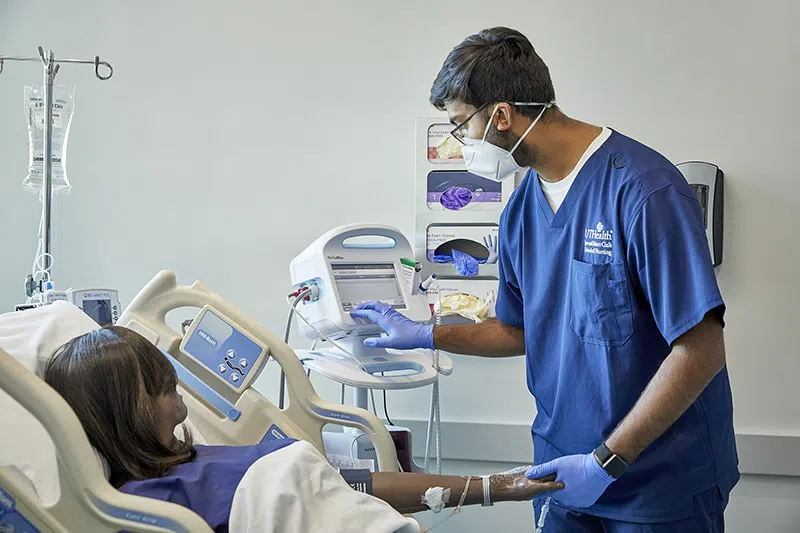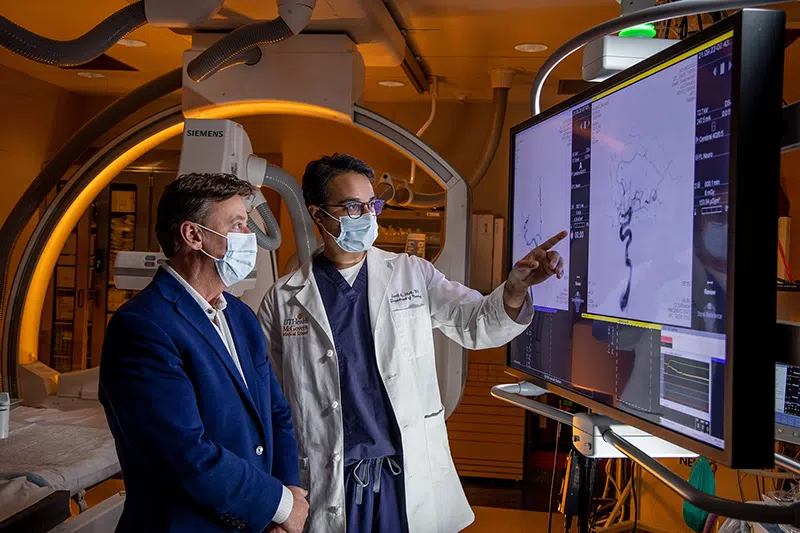PhD Public Seminar: Wenhao Li
When & Where
March 15, 2024
3:00 PM - 4:00 PM
Virtual via Zoom ( View in Google Map)
Contact
- Academic Affairs
- [email protected]
Event Description
Dynamic Prediction of Disease Progression with Longitudinal Data
Advisor: Liang Li, PhD
Dynamic prediction plays a pivotal role in clinical research, especially when forecasting time-to-event outcomes based on evolving longitudinal data. This process often leverages the integration of longitudinal and time-to-event data through joint modeling, a prevalent technique. Alongside joint modeling, landmark modeling stands as another key approach in the realm of longitudinal studies. These methodologies are instrumental in dynamically predicting clinical events by utilizing predictor variables measured over time, up until the moment predictions are made.
Within this framework, Chapter 2 addresses the challenge of comparing joint modeling and landmark modeling for dynamic prediction in longitudinal studies, introducing a novel algorithm that generates data aligning with landmark model assumptions for a balanced evaluation. The study reveals that neither approach consistently outperforms the other in prediction accuracy, emphasizing the need for methodological advancements in both areas, illustrated through a kidney transplantation dataset analysis. Chapter 3 introduces a novel joint model for dynamically predicting end-stage renal disease with the competing risk of death, motivated by a study on chronic kidney disease, which efficiently handles the computational challenges of using multiple longitudinal biomarkers through a different factorized likelihood approach and EM algorithm. The model, which facilitates the prediction of future longitudinal data trajectories conditional on future risk, demonstrates improved efficiency and stability over conventional shared random effects models, validated through simulations and a real dataset comparison. Chapter 4 introduces the multi-layer backward joint model (MBJM) for dynamic prediction in clinical research, designed to efficiently handle multivariate longitudinal predictors of both continuous and categorical types, overcoming the computational limitations of traditional shared random effect models. The MBJM, validated through comparative analysis and application to the Mayo Clinic's Primary Biliary Cirrhosis dataset, demonstrates superior predictive accuracy and computational efficiency, highlighting its potential as an advanced tool for complex medical datasets.
Advisory Committee:
Liang Li, PhD, Chair
Brad Astor, PhD
Xuelin Huang, PhD
Jing Ning, PhD
David Ost, MD
Peng Wei, PhD
Attend via Zoom
Meeting ID: 862 1639 6287
Password: 969518
Dynamic Prediction of Disease Progression with Longitudinal Data
Advisor: Liang Li, PhD
Dynamic prediction plays a pivotal role in clinical research, especially when forecasting time-to-event outcomes based on evolving longitudinal data. This process often leverages the integration of longitudinal and time-to-event data through joint modeling, a prevalent technique. Alongside joint modeling, landmark modeling stands as another key approach in the realm of longitudinal studies. These methodologies are instrumental in dynamically predicting clinical events by utilizing predictor variables measured over time, up until the moment predictions are made.
Within this framework, Chapter 2 addresses the challenge of comparing joint modeling and landmark modeling for dynamic prediction in longitudinal studies, introducing a novel algorithm that generates data aligning with landmark model assumptions for a balanced evaluation. The study reveals that neither approach consistently outperforms the other in prediction accuracy, emphasizing the need for methodological advancements in both areas, illustrated through a kidney transplantation dataset analysis. Chapter 3 introduces a novel joint model for dynamically predicting end-stage renal disease with the competing risk of death, motivated by a study on chronic kidney disease, which efficiently handles the computational challenges of using multiple longitudinal biomarkers through a different factorized likelihood approach and EM algorithm. The model, which facilitates the prediction of future longitudinal data trajectories conditional on future risk, demonstrates improved efficiency and stability over conventional shared random effects models, validated through simulations and a real dataset comparison. Chapter 4 introduces the multi-layer backward joint model (MBJM) for dynamic prediction in clinical research, designed to efficiently handle multivariate longitudinal predictors of both continuous and categorical types, overcoming the computational limitations of traditional shared random effect models. The MBJM, validated through comparative analysis and application to the Mayo Clinic's Primary Biliary Cirrhosis dataset, demonstrates superior predictive accuracy and computational efficiency, highlighting its potential as an advanced tool for complex medical datasets.
Advisory Committee:
Liang Li, PhD, Chair
Brad Astor, PhD
Xuelin Huang, PhD
Jing Ning, PhD
David Ost, MD
Peng Wei, PhD
Attend via Zoom
Meeting ID: 862 1639 6287
Password: 969518










